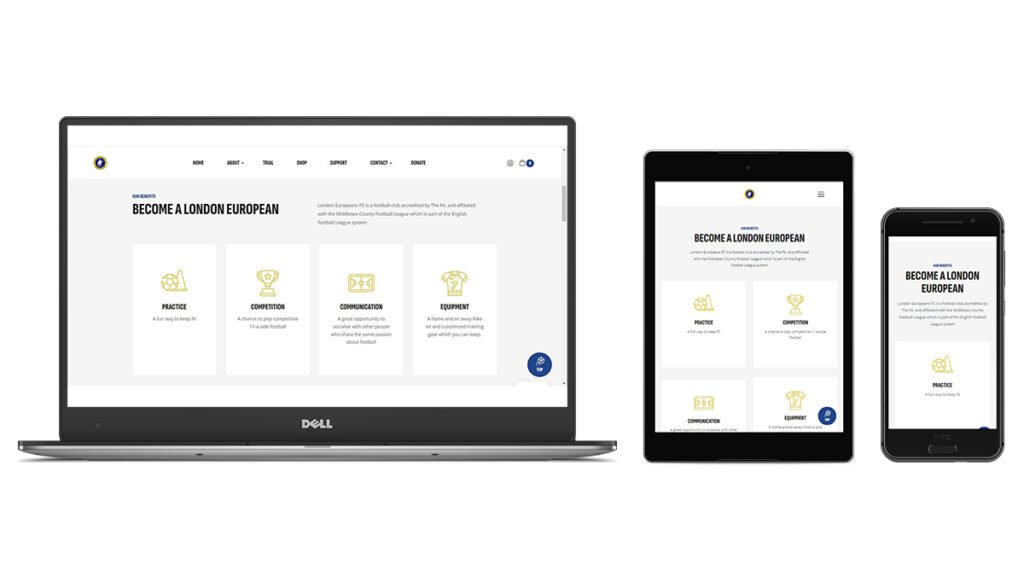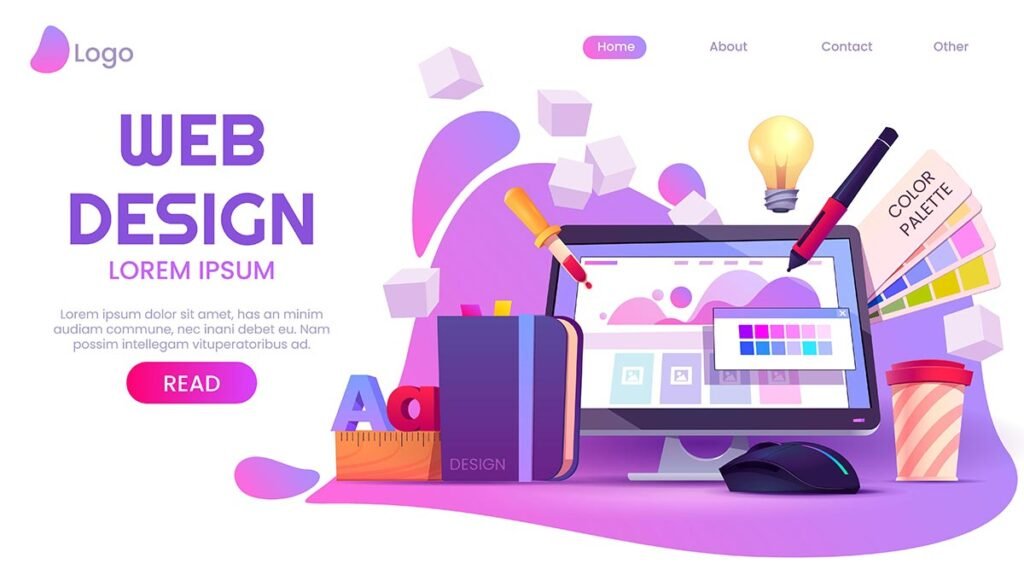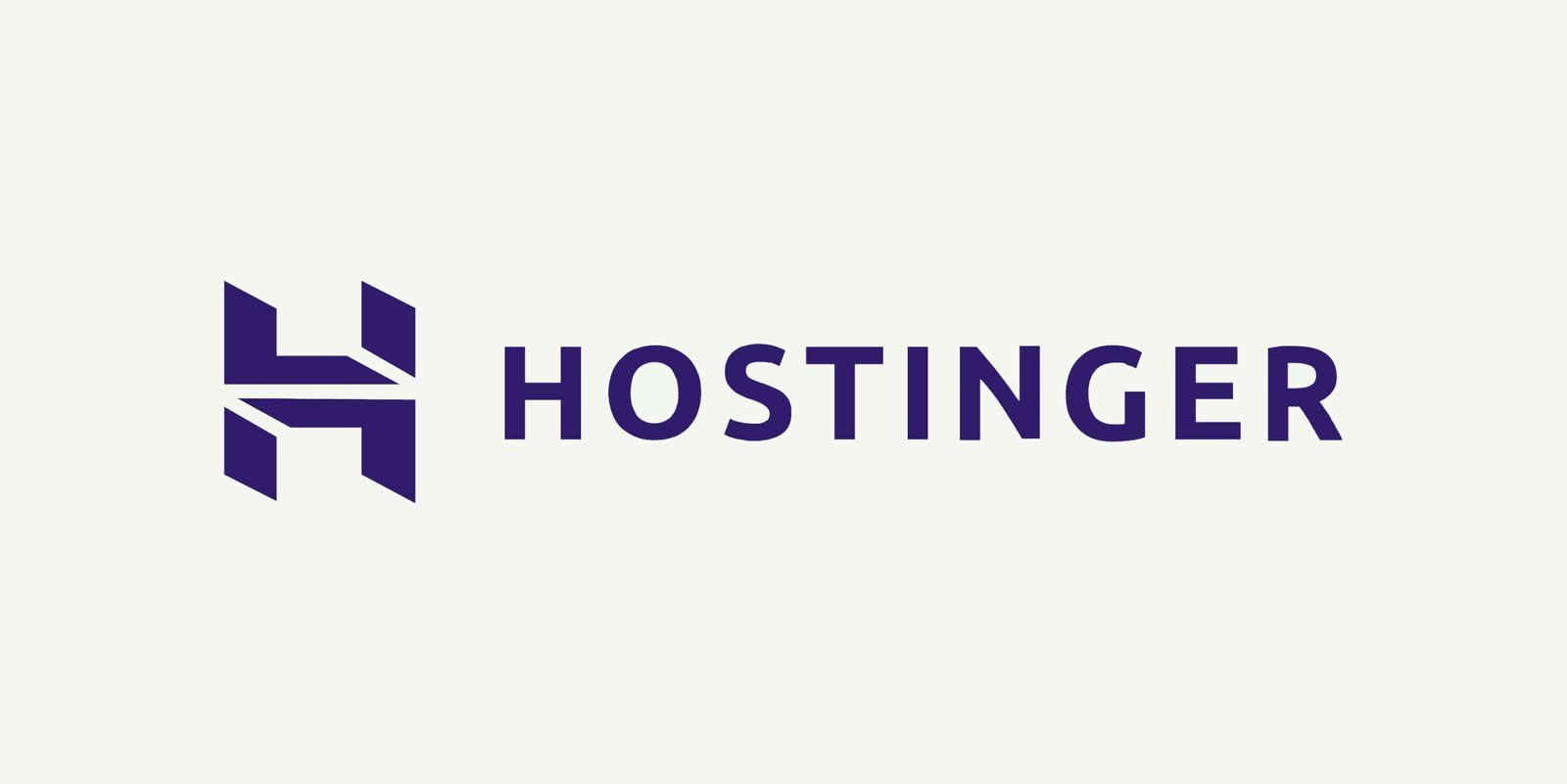Introduction
Creating websites with the user experience in mind is the creative and technical process of web design. It’s not just about aesthetics—it also includes functionality, loading speed, navigation, and adaptability across different devices.
A well-designed website can attract visitors, keep them engaged, and guide them toward desired actions such as purchases, sign-ups, or inquiries. Let’s examine some essential web design concepts that can have an impact.
The Importance of Simplicity
What defines a simple design?
- Clean and minimalist layout
- Limited color palette (ideally 2-3 primary colors)
- Clear content hierarchy
- Avoiding cluttered or overloaded pages
Responsive Design: Adaptability is Key
Gone are the days when websites were designed only for desktop computers. Today, a large percentage of users access websites via mobile phones and tablets.
Responsive web design prioritizes flexibility across different devices, creating websites that dynamically adjust to various screen dimensions.
When a site lacks responsive design, users encounter challenges navigating content, which can lead to increased visitor dissatisfaction and potential loss of audience engagement.
Below, you can see how the website https://londoneuropeansfc.co.uk/trial adapts to laptops, tablets, and mobile devices. The website was adapted by our web design company.

Usability & Easy Navigation
Web design isn’t just about looks—it’s also about functionality. Users must be able to navigate a website effortlessly and quickly find the information they need.
Best practices for a user-friendly experience:
- The main menu should be clear and easy to use
- Information should be well-organized into categories
- Important actions (e.g., “Buy Now,” “Contact Us,” “Learn More”) should stand out
- Use Call-to-Action (CTA) buttons to guide users
Fast Loading Speed
Quick internet pages keep people interested. When a website takes too long to appear, visitors get impatient and move on. In today’s fast-paced digital world, people expect instant access to information, and slow-loading sites risk losing potential viewers within seconds.
How to improve loading speed:
- Reduce image sizes without sacrificing quality
- Use caching (temporary data storage for faster load times)
- Minimize unnecessary scripts and code
- Choose a reliable hosting provider
Colors & Typography: The Power of Visual Design
Web design isn’t just about functionality—it’s also about aesthetics. Colors and typography can influence how visitors perceive your website.
Tips for effective colors & fonts:
- Choose one primary color and 1-2 complementary shades
- Use contrast for better readability (e.g., dark text on a light background)
- Limit the number of fonts—1 or 2 are enough
- Ensure headings stand out from the rest of the text
Accessibility: A Website for Everyone
A well-thought-out web design should be accessible to all users, including those with disabilities.
How to improve accessibility:
- Use alt text for images
- Ensure color contrast for readable text
- Enable keyboard navigation for users who don’t use a mouse
- Avoid very small font sizes
SEO & Web Design: A Powerful Combination
A website shouldn’t just look great—it also needs to be search engine optimized (SEO-friendly) so that users can find it on Google.
How to improve SEO through web design:
- Use proper heading tags (H1, H2, H3, etc.)
- Integrate keywords naturally within the content
- Create SEO-friendly content (blog posts, articles, product descriptions)
- Optimize images for faster loading speeds
- Ensure mobile-friendliness for better rankings
Conclusion
Digital platforms demand far more than superficial visual appeal. Exceptional websites masterfully blend aesthetic creativity with practical functionality, creating intuitive digital environments that seamlessly guide users through their online journey. The art of web design transcends mere decoration, focusing instead on crafting experiences that are accessible, responsive, and purposefully engineered to meet user needs.
By embracing fundamental design principles that prioritize both form and function, organizations can develop distinctive online presences that truly resonate with their audience. These strategically constructed websites become powerful communication tools, simultaneously attracting visitors and directing them toward key interactions. If you’re looking for professional web design and development, visit Azure Sky Web Creations and discover how we can help you build your ideal online presence.
Featured image by Freepik




